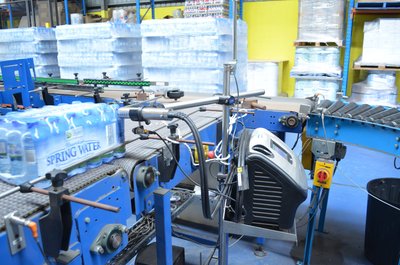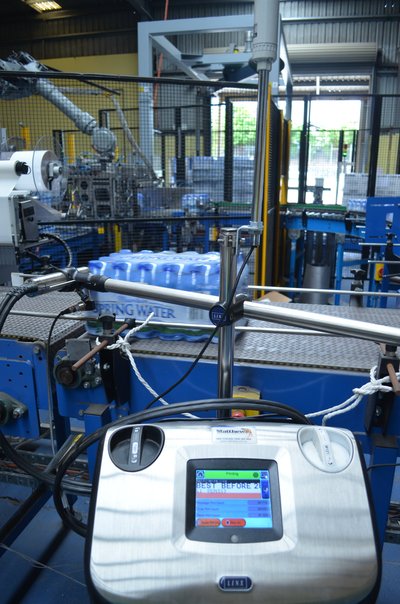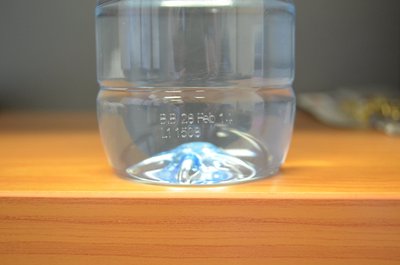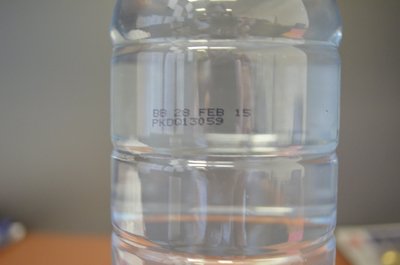Coding solution keeps pace with expanding water bottler
As its business expanded, Stapylton-based natural spring water company Wet Fix found that its coding equipment couldn’t keep up. While the company sells its own Mountain Dew label to distributors, the bulk of its business is contract packing, servicing more than 200 customised labels.
Kayne Gill and partners acquired the business in 2004, when it was producing only 19 litre bottles. As the company grew, it entered retail markets and moved to larger premises. The change into retail and customised labelling saw the company expand its bottle sizes.
The company found its coding equipment had some issues keeping up with the ever-increasing output.

“We had a laser that had reliability issues; it was very faint and would also miss from time to time. Then, changes to packaging meant we could no longer print and apply an adhesive label to shrink wrap, so we needed another solution there. On a third line, we also had a very old hot-foil system. So the whole lot needed upgrading to remove the downtime hassles, plus give us a professional-looking result,” Gill said.
After comparing different technologies and suppliers, Wet Fix chose two Linx CJ400 continuous inkjet (CIJ) coders and a 30 W e-SolarMark laser from Matthews Australasia.
“We chose that particular machinery because it’s easy to use and it’s flexible - both speed-wise and it allows us to code where we want. But we also chose it because of the print quality. We found other, similar options out there, but they didn’t seem to have as good a quality print at that speed. The CJ400s and e-SolarMark were just better value,” Gill said.
Wet Fix already used a small DOD inkjet coder from Matthews to code its cartons and was happy with Matthews’ service levels.
The company uses the e-SolarMark and one of the CJ400 Linx printers to code onto a range of different PET bottle sizes and shapes, from 300 mL to 10 L. The second CJ400 is used to code best-before dates onto shrink-wrapped packs.
“We’re expanding very rapidly - it’s good. We had a new line in August, so completely moved over to laser coding on the PET bottles on all but one line - the one where we were using the hot-foil. We’ll retain the CJ400 coding there,” Gill said.

The CJ400 has four different line settings that can be stored. “And all of that shows the flexibility of those coders - we can use them anywhere we need in our business, which is another reason we bought that technology,” Gill said.
Using the CJ400 to code onto a shrink-wrapped pack of 24 bottles instead of print-and-apply labels has resulted in a more professional look, says Gill. (The CJ400 also has the ability to code onto cartons.)
“Previously, we were printing and applying pack labels and a description of the pack, along with the best-before date and batch number,” said Gill.
“Now, most of our clients have gone to a preprinted shrink wrap. It’s a similar price but looks a lot more professional when the product goes out. If you have print going onto a label there has to be enough space, and on some applications the labels weren’t very good quality either. This is much better and, warehouse-wise, it doesn’t take up a lot of space - unlike if it was preprinted cartons.”

The e-SolarMark laser and Linx CJ400 that code onto PET bottles are situated immediately after the cleanroom on the production line, with the second CJ400 located prior to the palletisers, directly after the shrink tunnel.
“At the moment we’re using that for best-before dates and traceability with regards to time, Julian date, line number and so on. In rare cases, we also print a message and we could, if needed, do logos. We’re just doing two lines of text. The best-before wording is fairly large, so it’s easy to find, while the actual date underneath is smaller,” Gill said.

The CJ400 and e-SolarMark can code onto the PET at 175 bottles/min with three lines of text. At this point, Wet Fix doesn’t require such high speeds, but Gill is pleased that the higher capable speeds futureproof the lines.The three pieces of Matthews equipment have improved Wet Fix’s efficiency and productivity, Gill says.
“It’s very concerning if something goes out there without traceability coding - it is potentially very damaging to the product and brand. We were having reliability issues with our old equipment to the point that we were manually checking everything as it went out,” said Gill.
“We do have an hourly set check, but when we were having reliability problems, we were manually checking every moment we could - as much as every five to 10 minutes. We had to be sure the print was still going on, because when it stops you have to go back through all that production to see where it stopped and then pull that product out and get it reprinted or dispose of it. It is a big nightmare, and the quicker you can catch it the better.
“Coding is a critical area. As well as giving a professional-looking result, this equipment has certainly relieved that pressure.”
Apricot packaging goes linerless
Blossom Hill Packing has introduced a linerless fruit lid/fibre-based tray combo as part of its...
Edenvale Foods focuses on product innovation with the help of automation
As the functional snackfood business enters its next phase, it became crucial to upscale to...
Intelligent packaging solutions for the bakery industry
There have been many advancements in the bakery industry in recent years, particularly in the...











